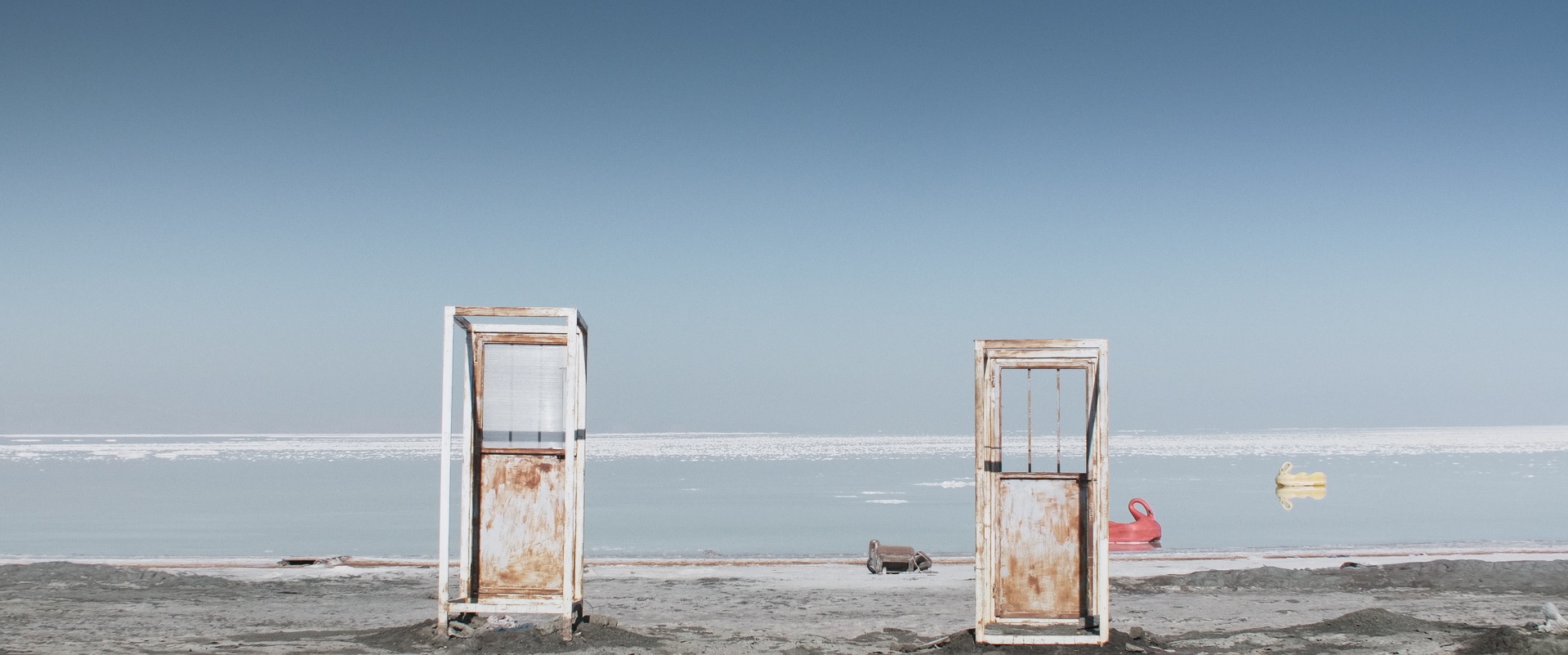On Daniel Asadi Faezi's work
Essay on the work of Daniel Asadi Faezi
Screened during FIELD RECORDINGS 3
Autor Yara Yuri Safadi
Published November 12, 2021
Screened during FIELD RECORDINGS 3
Autor Yara Yuri Safadi
Published November 12, 2021
While going through Daniel Asadi Faezi’s works, an overwhelming need of documenting seems to speak to me. Each film seems to become a palimpsest, bearing traces of earlier forms of living, of landscapes, of traditions. The filmmaker appears to be producing images as a resistance to time, or rather as a marker of time, almost accepting to be defeated by the changes brought about by the transformation of the landscapes and places that he films in.
If we were to look at Where We Used to Swim (2019), a certain nostalgia throwing us to a past, but we quickly shift our perspective to a nostalgia about the future. The film bears witness to the drying of Lake Urmia, the largest lake in the Middle East. The filmmaker used to swim there, and returns to the space with an attempt to reflect on the area’s past. There is a sadness that is overwhelming, that reflects on the specific time that the film is being made. We are positioned in the return to something that no longer is.

Still from Daniel Asadi Faezi’s Where We Used To Swim (2019).
At first sight, Daniel Asadi Faezi’s works appear to be dealing with territory, with spaces and ecology. However, a territorial shift happens in the films, where we move from a geographical conception to a temporal one. The films operate at the break of contemporaneity. It challenges how history is written in parts of the world, where non-hegemonic personal experiences challenge the hierarchical linear concept of time. This universe that we dive into doesn’t pretend to fix this rupture, that is, to make time linear again, but attempts at cultivating a more accurate representation of loss through poetry. In Where We Used to Swim, we are moved by a defiance against nostalgia, driven to look back at archives and memories uttered by sons and daughters of the land in order to activate the past in the present.

Still from Daniel Asadi Faezi’s The Absence Of Apricots (2018).
We are reminded of Hannah Arendt’s Crisis of Culture. We, as spectators, are brought to the space in which the subjects of the film live: a space where the possibility of building anew is immediately tied to a static form living, an impossibility to move, imprisoned between past and future. In Where We Used to Swim, the majestic never-ending landscapes of salt deserts are seen from a high angle, with an eagle-like perspective that compels us to a situation of reflection. We witness the scars, the ruins left by the drying out of Lake Urmia. One of the only static shots looking up is one from under a bridge. We can see light waves being reflected on the bridge’s concrete. The reflection denotes a trace of the water’s presence underneath the bridge. Similarly, on the images of the dried lake, we bear witness to the songs chanted by locals, lullabies of their grief which underline a broken symbiosis in the absence of water. When we look at the past, as the film’s title suggests, the Human appears in a singular and personal form. With a direct cut, we are thrown back in time with an archival travelling shot of people swimming in the lake. Without a dialogue or voice-over, we read as subtitles: “You hold all my memories, ah, Lake Urmia, / if you go dry, I’ll die.” A travelling shot frames the scenery cut in half by the horizon drawn between the faded blue skies and the white salt desert underneath. Over the non-changing landscape, we hear one of the folkloric songs speaking to the lake: “It was so beautiful to swim inside you! / They dried it out, they are talking about you, / they are talking about me, they are talking about you, / they are talking about me.”

Still from Daniel Asadi Faezi’s Observation Of Hawks In The Sky (2017).
The communal loss and sense-making of suffering is what is being documented. The loss is collective, as is their immediate identification: when the locals lose the lake, they lose themselves, too. It brings us to the second half of the film, where our attention is brought to the activities around the same area in the present. Huge trucks transport salt; workers wait on the side of the highways to sell their salts; families picnic amidst passing vehicles; and two men cross the desert of salt, with no beginning or end, taking pictures of themselves in this forever-transformed landscape. The film ends with a solemn voice-over: “Let them do whatever they want. Because an orphan is without hope.”
Daniel Asadi Faezi leaves us on a note: human activity brought us the drought, and so we are irrevocably propelled into orphanhood.
 Still from Daniel Asadi Faezi’s Where We Used To Swim
(2019).
Still from Daniel Asadi Faezi’s Where We Used To Swim
(2019).